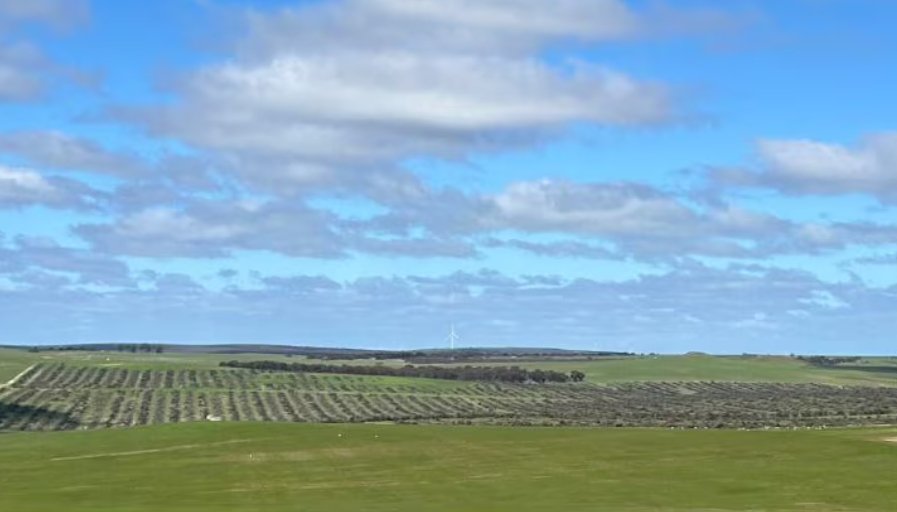
Parron Developments and Atmos Renewables plan to build the 79-turbine Parron Wind Farm on a 8,400-hectare farm at Badgingarra, 200 kilometres north of Perth.
Tim Stevenson and his family have worked the cropping and grazing property for more than 30 years, establishing Parron Developments more than eight years ago to diversify their business.
"We're sheep farmers and always have been and to de-risk the operation and get an income stream for the next 35 years was the prime reason for it," he said.
Equity partner Atmos Renewables joined the project two years ago.
The company has interests in more than 1.8GW of renewable assets via a dozen operational wind, solar, and battery projects across eastern Australia.
In Western Australia, Atmos is in the late stage of developing a 100-megawatt battery in Merredin in the Wheatbelt.
For the Parron Wind Farm, the company has committed to pay $1,000 per megawatt of energy generated per year into a community benefit fund.
At maximum generation capacity, this will add up to almost half a million dollars per year and more than $17 million over the 35-year life of the project.
Mr Stevenson said a Clean Energy Council guide to benefit sharing was used to determine the figure.
"We see that as a huge benefit that we can put back into the community and share the love with people from these types of developments and hopefully increase the population in the rural communities," Mr Stevenson said.
The project is the fourth wind farm for the Shire of Dandaragan and comes amid growing concern from some country local governments over the rapid growth of wind energy projects in WA.
Precedent-setting deal
Shire president Tony O'Gorman said this project would be the most generous in terms of community contributions.
"For a long, long time, the community benefit from wind farms has been dictated by the wind farms and they have given a certain amount," he said.
"For example, Yandin contributes about $60,000 a year, which is very welcome, but we think there are opportunities to increase those sorts of community benefits."
Mr O'Gorman said working with a local proponent had made all the difference in negotiating a good outcome.
"He understands the issue with gravel roads and how they get chewed up with heavy vehicles, he understands the issue of having more people in our community and how that helps our towns," he said.
Mr O'Gorman believed the deal could set a precedent for local governments across the state in their ongoing negotiation with energy companies.
"We've got at least another two wind farms in negotiation at the moment; we have spoken to those proponents already and told them what we are expecting," Mr O'Gorman said.
"We are not just going to be taking small amounts of money and thinking that that is going to do the job.
"We want to have a real community benefit for the long term, so we'll be pushing those points to all those proponents as they come through."
The project is undergoing federal environmental assessment and is subject to approvals with work expected to begin in 2026.